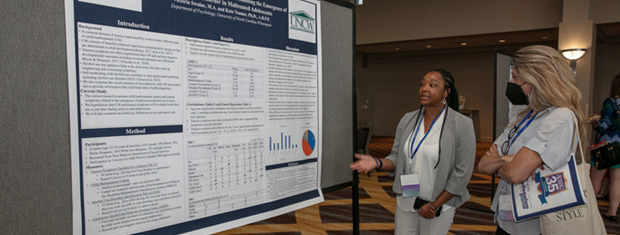




The APSAC Advisor is a peer reviewed quarterly news journal for professionals in the field of child abuse and neglect.
The APSAC Advisor provides succinct, data-based, practice-oriented articles that keep interdisciplinary professionals
informed of the latest developments in policy and practice the field of child maltreatment. It is designed to highlight
best practices in the field and publish original articles and current information about child maltreatment for professionals
from a variety of backgrounds including medicine, law, law enforcement, social work, child protective services, psychology,
public health and prevention in the U.S.
 If you wish to learn more about submitting an article to the Advisor, please click here.
If you wish to learn more about submitting an article to the Advisor, please click here.
This library contains Advisor issues dating back to the first issue in 1988. The most recent issue appears at the top.
Scroll down to select past issues by year and issue number. Once a publication appears in the box, you
can use the Enlarge button to open the document in a new window or tab (depending on how your browser is set up).
This will allow you to view the document with larger print.
To print a document, first use the Enlarge button to open the document in a new window or tab. Then use your browser's Print command.
To return here from a new tab, close the tab. To return from a new window, click your browser's Back button.
In the listing below, click on a year and issue number to see the articles in that publication.
2009 Number 1
Promoting Successful Family Reunification: A Systematic Review of the Relevant Research
One of the key challenges facing child welfare workers is how to successfully reunite families who have been separated due to abuse, neglect, or the parents’ inability to handle unruly children. Each year approximately 500,000 children in the United States reside in out-of-home care (Administration for Children and Families [ACF], 2008) with foster parents, relatives, or in other residential settings.
Although the peer-reviewed home visiting literature has provided little empirical evidence for the effectiveness of home visiting as a means of reducing the risk of child maltreatment (Gomby, 2000; McGuigan, Katzev, & Pratt, 2003; Sweet & Appelbaum, 2004), hundreds of programs continue to recruit and serve families. Further, 76% of home visiting programs in the United States employ at least some paraprofessionals (Chaffin, 2004; Duggan et al., 2004; Powell, 1993; Wasik & Roberts, 1994) in spite of lack of empirical rationale and support for the use of paraprofessionals within a home visiting treatment modality.
Family and community violence, child abuse, and emotional maltreatment are taking a toll on young children. More and more children participating in early learning programs are struggling with the lasting effects of these experiences. The Ohio Department of Mental Health has estimated that between 7% and 20% of preschool and early school-age children have behavior disorders that qualify for a mental health diagnosis. Children who are identified as hard to manage at ages 3 and 4 have a 50% chance of continued difficulties in adolescence and adulthood.
The purpose of Journal Highlights is to alert readers to current literature on child abuse. Selected articles from journals representing the variety of disciplines reflected in APSAC's membership are presented in the form of an annotated bibliography.
APSAC Advisor 21(1): Full Issue